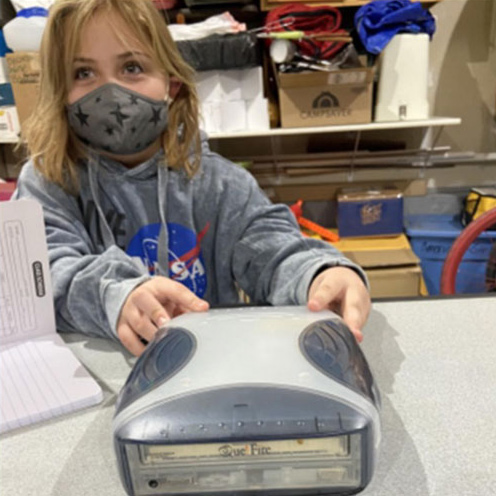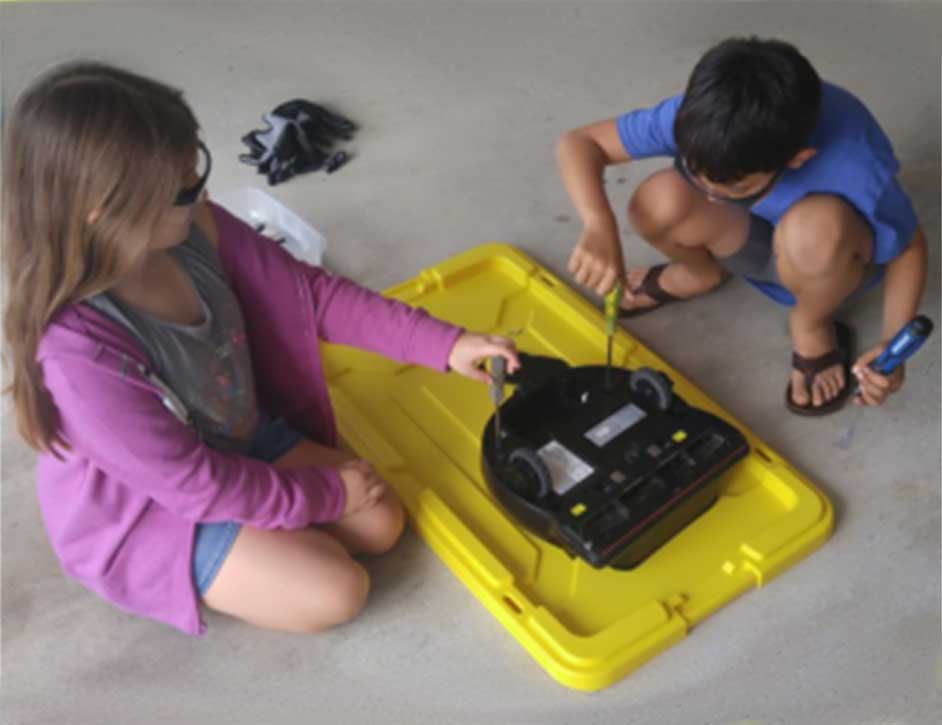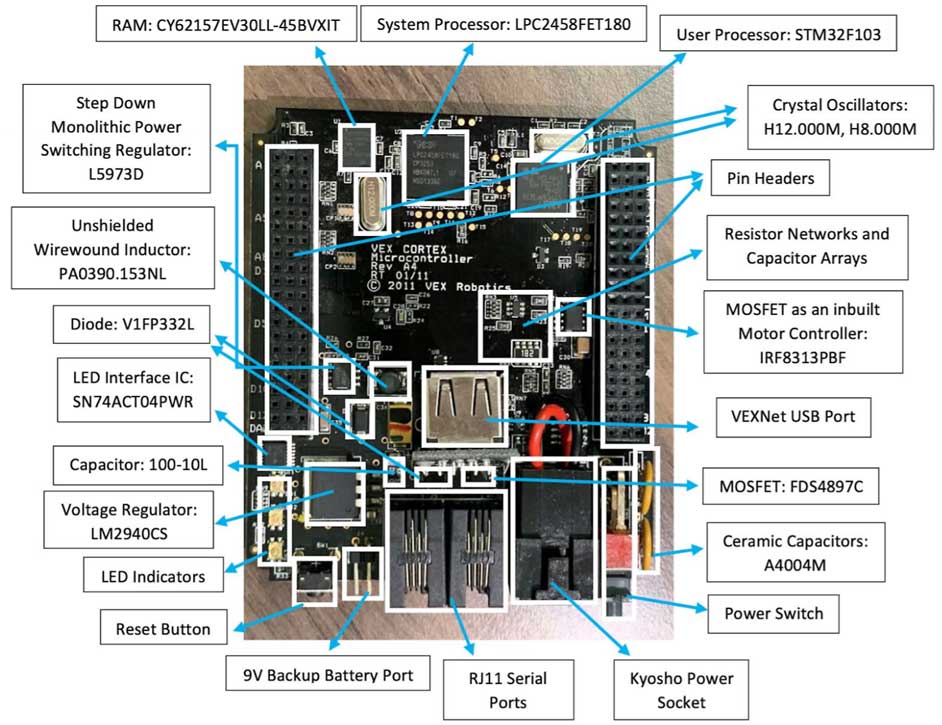Celebrate National Robotics Week With Supervised Teardowns
Did you know that the best way to understand how something works is to take it apart and examine the insides? That’s why “teardown” videos are so popular — they show us what’s on the inside of everyday products without having to worry about reassembling them.
In celebration of National Robotics Week, I wanted to introduce you to the Electronics Online Challenge that was part of the VEX Robotics competition season. This teardown contest was organized by the Robotics Education & Competition Foundation (with Texas Instruments [TI] as a proud sponsor). But, while the contest is over, this is easily something you could implement with your school’s robotics club.

Let me explain a little more on how teardowns work. Student teams take apart electronics products, catalog their findings and submit a report. They have to follow safety protocols and get permission from their robotics coach/parent before breaking out the screwdrivers (and with good reason). A panel of judges (or a parent or coach) then reviews the students’ reports. I was lucky enough to be one of the judges on the Electronics Online Challenge panel. It was impressive to see the broad range of devices that students analyzed and what they learned from this effort.
Some teams worked remotely, only collaborating online. Others met in person, keeping their distance and using masks to follow COVID-19 safety protocols. But none of them let the pandemic affect their interest in understanding what makes products work. There were 181 entries for this competition — a record number of entries, and proof that sanctioned destruction of interesting devices is a wonderful way to encourage curiosity and inspire students to think like engineers. The teams were very varied in their composition — from a couple of single-student teams to groups of students — and they ranged in age from fourth graders to high school seniors.
Some of the devices that were taken apart and analyzed were:
- Samsung electronic vacuum
- Motorola flip phone
- A VEX controller
- A combination DVD player/karaoke machine
- Cisco Modular Access Router
- A TV remote
- TI calculators

The students’ research was very thorough; they studied the components, learned about their functions and even tracked down data sheets when they could find them. The judges were impressed by the students’ level of detail and delighted by their sense of wonder.
Below is an example of a report from a team that analyzed the controller of their competition robot.

Some teams also got a lesson in business, learning about mergers in the industry through their parts research. The teams discovered that over the years there were numerous mergers and acquisitions. Among the 26 manufacturers, only six U.S. companies have not been acquired by other or foreign companies and, fun fact, finding their data sheets was easier.
There were also some fascinating nuggets of information about these students that participated in the contest. For example, the team that analyzed a Baofeng radio receiver has several licensed amateur radio operators on the team. And many of the reports went beyond dry analysis in their prose. A couple of examples that stood out to me:
- “And thus, the old VEX controller would soon meet its fateful demise, carried out by its greatest mortal enemies: the screwdriver and my own two hands.”
- “I discovered how essential patience, perseverance and problem-solving are in the research, as well as deconstruction process.”
Communication is a very important skill for future success, and it was wonderful to see these students convey their findings and analysis in clear, eye-catching ways.
I am very glad that TI supported this contest encouraging interest in the inner workings of electronics products. The reports were proof that these students learned about more than chips and components — they learned the various subsystems of a product and how the whole is more than the sum of its parts.
We hope you celebrate National Robotics Week by encouraging your students to delve into the technology they use every day to get a lesson not only in robotics, but in business and communications as well. And of course, I’d love to see what you discover in your teardown projects. Share them with me @TICalculators on social media.
I hope you have a tear-ific time!
About the author: Harshal S. Chhaya is a systems engineer and product manager for TI’s educational STEM products. He also leads the company’s robotics outreach programs and works with partners to increase student participation in robotics competitions. Chhaya enjoys using advanced engineering to make education fun and engaging for students and teachers. You can follow him on Twitter @hschhaya.
Tagcloud
Archive
- 2025
- 2024
- 2023
- 2022
-
2021
- January (2)
- February (3)
- March (5)
-
April (7)
- Top Tips for Tackling the SAT® with the TI-84 Plus CE
- Monday Night Calculus With Steve Kokoska and Tom Dick
- Which TI Calculator for the SAT® and Why?
- Top Tips From a Math Teacher for Taking the Online AP® Exam
- Celebrate National Robotics Week With Supervised Teardowns
- How To Use the TI-84 Plus Family of Graphing Calculators To Succeed on the ACT®
- AP® Statistics: 6 Math Functions You Must Know for the TI-84 Plus
- May (1)
- June (3)
- July (2)
- August (5)
- September (2)
-
October (4)
- Transformation Graphing — the Families of Functions Modular Video Series to the Rescue!
- Top 3 Halloween-Themed Classroom Activities
- In Honor of National Chemistry Week, 5 “Organic” Ways to Incorporate TI Technology Into Chemistry Class
- 5 Spook-tacular Ways to Bring the Halloween “Spirits” Into Your Classroom
- November (4)
- December (1)
-
2020
- January (2)
- February (1)
- March (3)
- April (1)
- May (2)
- July (1)
- August (2)
- September (3)
-
October (7)
- Tips for Teachers in the time of COVID-19
- Top 10 Features of TI-84 Plus for Taking the ACT®
- TI Codes Contest Winners Revealed
- Best of Chemistry Activities for the Fall Semester
- Best of Biology Activities for the Fall Semester
- Best of Physics Activities for the Fall Semester
- Best of Middle Grades Science Activities
- November (1)
- December (2)
- 2019
-
2018
- January (1)
- February (5)
- March (4)
- April (5)
- May (4)
- June (4)
- July (4)
- August (4)
- September (5)
-
October (9)
- Art in Chemistry
- Which Texas Instruments (TI) Calculator for the ACT® and Why?
- Meet TI Teacher of the Month: Jessica Kohout
- Innovation in Biology
- Learning With Your Students
- A first-of-its-kind STEM strategy charts path to help educators
- #NCTMregionals Hartford 2018 Recap
- The Math Behind “Going Viral”
- Real-World Applications of Chemistry
-
November (8)
- Testing Tips: Using Calculators on Class Assessments
- Girls in STEM: A Personal Perspective
- 5 Teachers You Should Be Following on Instagram Right Now
- Meet TI Teacher of the Month: Katie England
- End-of-Marking Period Feedback Is a Two-Way Street
- #NCTMregionals Kansas City 2018 Recap
- Slope: It Shouldn’t Just Be a Formula
- Hit a high note exploring the math behind music
- December (5)
- 2017
- 2016
- 2015
